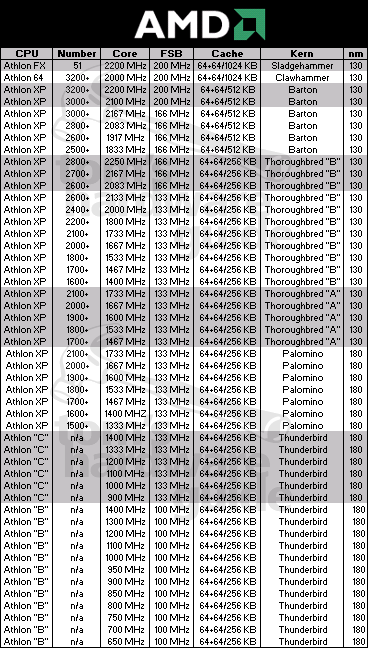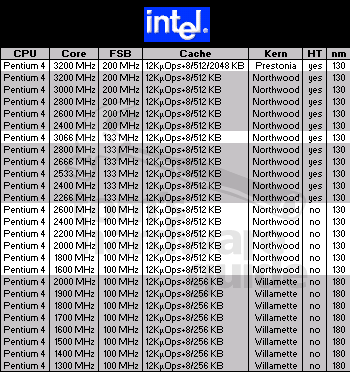AMD's Athlon 64 Has Arrived: the Athlon 64 FX and Athlon 64 (and Intel's P4 Extreme)
All AMD And Intel Processors At A Glance


64 Bit - A Little Bit Of Theory Never Hurt!
In order to process data, store interim results or do indirect addressing, each processor has a number of internal memory cells that can be accessed, called registers. Each register has a fixed width that indicates how much data can be processed with one command. A 32 bit processor such as the Intel Pentium 4 or the AMD Athlon XP can, for example, add numbers from 0 to more than 4 billion in one step, while an older 16 bit processor (e.g. Intel 80286 CPU), which can only add to 65535, would require two steps for higher numbers. Additionally, however, in each case the speed can be higher if the internal registers are wider than if smaller registers are combined. Also, each processor must write the data in the registers to the memory as well. Therefore it is best if the data bus has the width of the register. Once more, the Intel Pentium 4: it has a 64 bit wide data bus, so more data can be called up from the memory. However, only a few 64 bit processors have 64 bit address spaces. The Intel Itanium (1), for example, has a 44 bit wide address space. The larger address space is crucial for many applications, because particularly servers with database applications can never have enough memory. Often 4 GB, with a possible 32 bits, are not enough.
The so-called SIMD operations (SSE, SSE2), which are a special case, profit from 64 bit processing. A 64 bit processor can natively calculate the important 64 bit floating point format ("double precision" - precise up to 15 digits) and is therefore faster - this is the main reason why 64 bit processors take the lead in the floating point benchmarks.
Stay on the Cutting Edge
Join the experts who read Tom's Hardware for the inside track on enthusiast PC tech news — and have for over 25 years. We'll send breaking news and in-depth reviews of CPUs, GPUs, AI, maker hardware and more straight to your inbox.
Current page: All AMD And Intel Processors At A Glance
Prev Page Fab30 Dresden Yield: 73 Athlon 64 CPUs Per Wafer! Next Page Rough Going - Hardware In The Test PanelMost Popular

